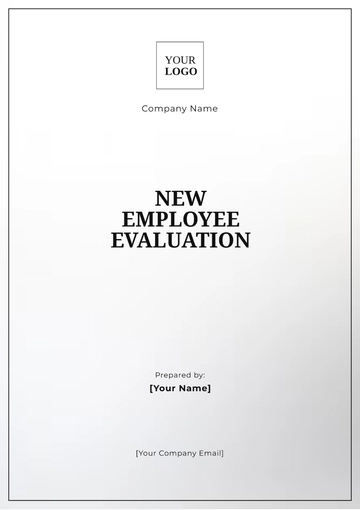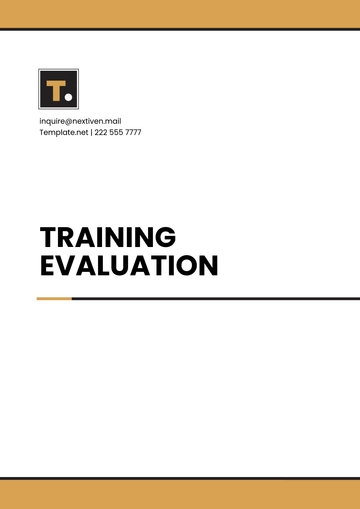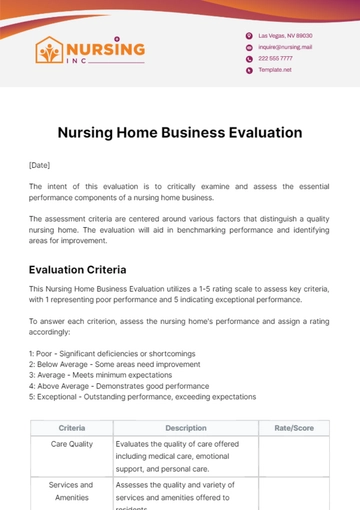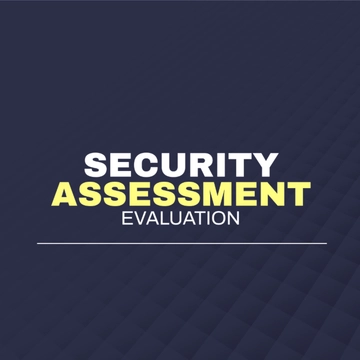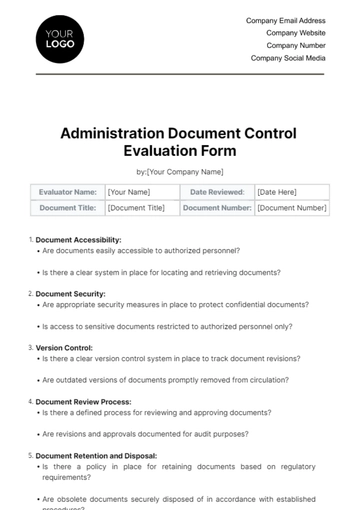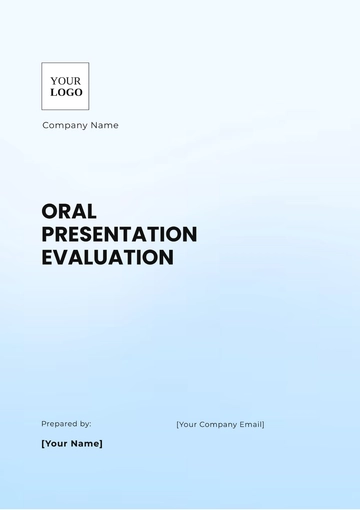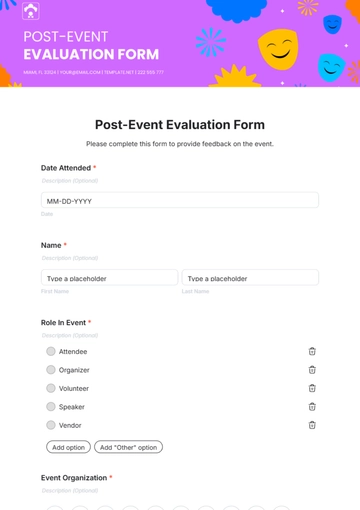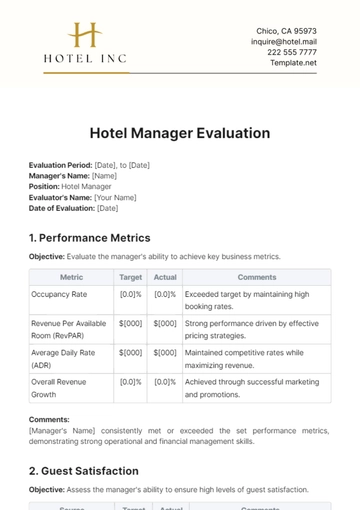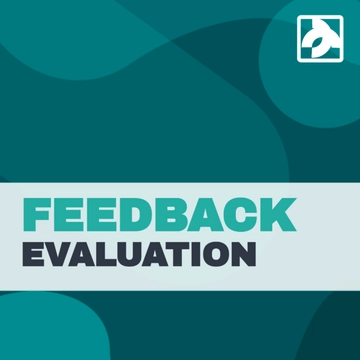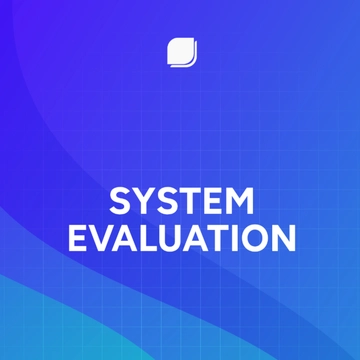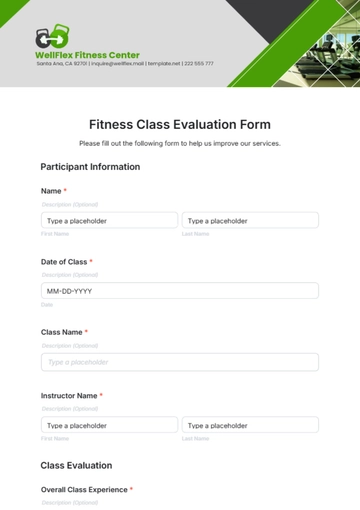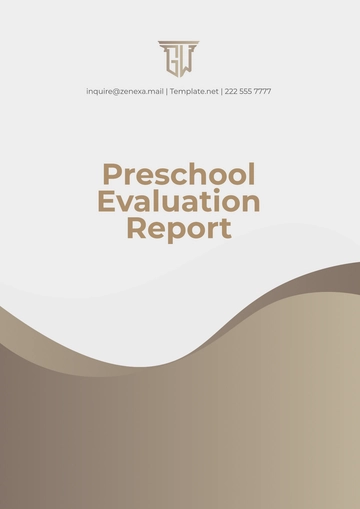Free Occupational Health and Safety Evaluation
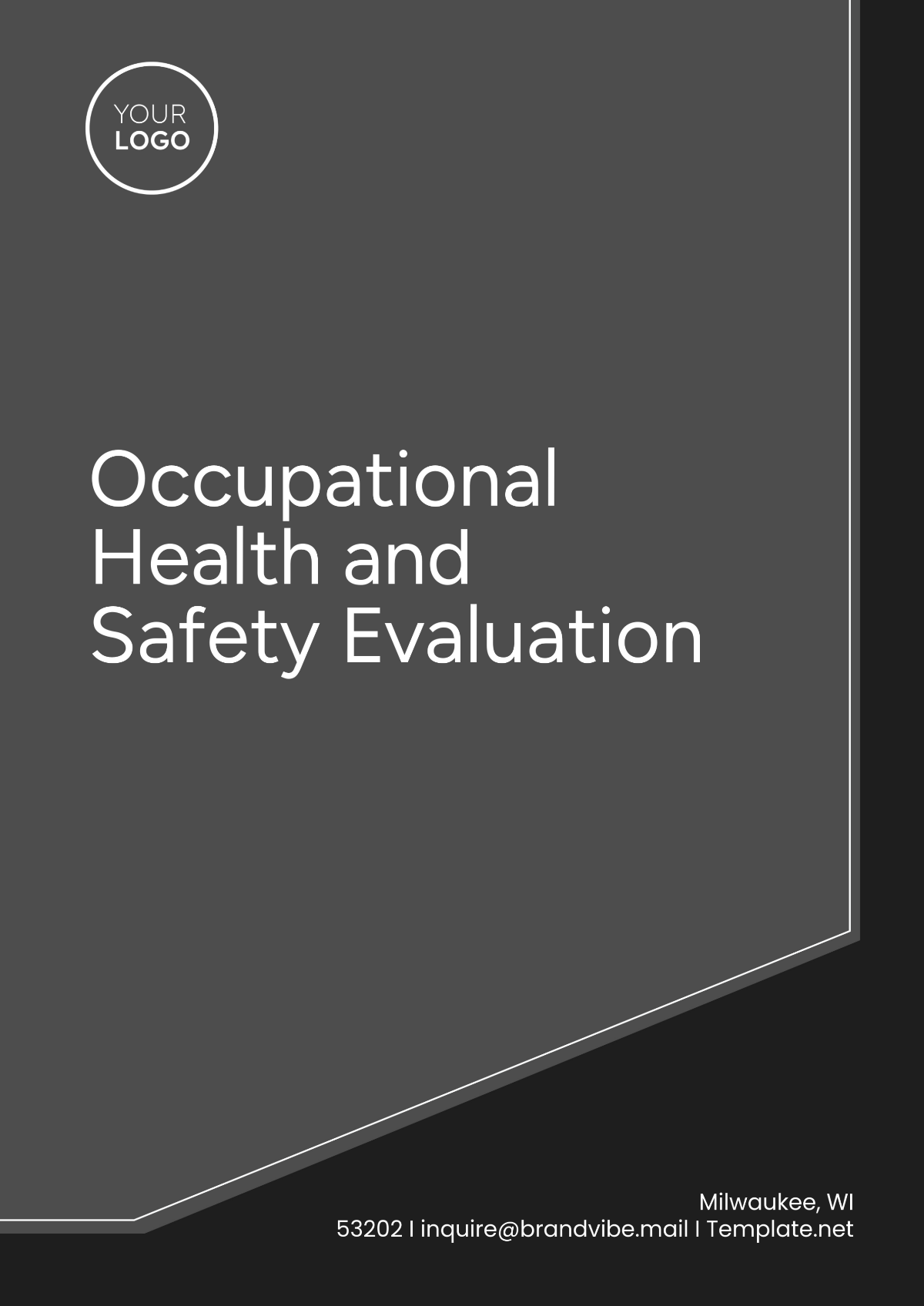
Prepared by: [Your Name]
Company: [Your Company Name]
Date: January 2, 2051
1. Introduction
The primary objective of this report is to evaluate and assess the Occupational Health and Safety (OHS) practices within our organization. Ensuring a safe working environment is critical to the well-being of our employees, the prevention of workplace accidents, and maintaining operational efficiency. This evaluation presents an in-depth analysis of current safety practices, identifies areas of concern, and provides actionable recommendations to improve overall safety standards and foster a culture of well-being across the organization.
2. Importance of Occupational Health and Safety
OHS is vital not only for protecting employees from injuries and health risks but also for enhancing productivity, reducing absenteeism, and improving employee morale. A robust OHS framework demonstrates the organization's commitment to health and safety, which is essential for legal compliance and maintaining a competitive edge.
3. Methodology
3.1 Data Collection
The data for this evaluation was gathered using a comprehensive, multi-method approach, including:
Surveys: Distributed to employees across all departments to gauge their awareness and perceptions of safety practices.
Interviews: Conducted with key personnel, including management, safety officers, and employees, to collect qualitative insights into safety concerns and practices.
Site Inspections: On-site visits were conducted to observe safety measures, equipment, and overall compliance with safety regulations.
Review of Safety Records: Examination of existing safety records, including incident reports, accident logs, and previous risk assessments, to identify patterns and areas needing improvement.
3.2 Data Analysis
The data collected was analyzed through both qualitative and quantitative methods. Statistical methods were used to identify trends and patterns in accident rates, training frequency, and equipment usage. Qualitative analysis provided deeper insights into employee perceptions, attitudes, and the cultural aspects of safety within the organization.
4. Evaluation of Current OHS Practices
4.1 Safety Training Programs
Safety training is a key element of our organization’s OHS strategy. All employees are required to undergo safety training, but the evaluation has revealed inconsistencies in the frequency and content of training programs. While some departments conduct regular training, others face challenges in meeting the required frequency, and some programs lack the depth needed to address specific departmental risks.
Key Findings:
Training programs vary by department, with some areas not receiving sufficient attention.
Inconsistent tracking of employee participation and training outcomes.
4.2 Risk Assessment Procedures
Risk assessments are performed regularly across the organization, but the evaluation identified deficiencies in the documentation and comprehensiveness of some assessments. Although risks are generally identified, not all assessments are followed up with detailed mitigation plans, and some lack sufficient depth.
Key Findings:
Risk assessments are conducted regularly, but documentation quality and follow-through could be improved.
The lack of standardized procedures leads to inconsistencies in risk identification and mitigation.
4.3 Emergency Preparedness
Our organization has emergency preparedness plans in place, with regular drills being conducted to test the effectiveness of these plans. However, feedback from employees suggests that these drills could be improved by incorporating more realistic scenarios that better simulate actual emergencies.
Key Findings:
Emergency drills are conducted, but they sometimes fail to mirror real-world emergencies.
Employees feel that emergency procedures need to be more dynamic and interactive.
4.4 Personal Protective Equipment (PPE)
Availability and proper use of PPE are critical for ensuring employee safety in hazardous work environments. While PPE is provided in most areas, the evaluation revealed instances of insufficient or improper PPE usage in certain departments.
Key Findings:
Inconsistent availability of PPE across some departments.
Gaps in employee knowledge regarding the correct use and maintenance of PPE.
4.5 Communication of Safety Protocols
Effective communication between management and employees is essential for the successful implementation of safety protocols. However, several employees reported communication gaps, particularly concerning updates to safety procedures or changes in protocols.
Key Findings:
Lack of effective two-way communication between employees and management regarding safety concerns.
Some employees report receiving insufficient information about new or updated safety policies.
5. Findings
Based on the evaluation, the following key findings were identified:
Inadequate frequency of safety training in some divisions.
Lack of comprehensive risk assessments in certain areas, with inconsistent documentation.
Insufficient availability and incorrect usage of PPE in specific departments.
Emergency procedures need to be enhanced for more realistic and dynamic scenarios.
Communication gaps between management and employees about safety policies and protocols.
6. Recommendations
6.1 Enhance Safety Training Programs
Action: Implement a consistent and comprehensive safety training program across all departments. Customize training content to address the unique risks in each department.
Objective: Ensure all employees are adequately trained and equipped to handle potential risks.
Outcome: Improve employee awareness and preparedness, reducing the risk of accidents and injuries.
6.2 Standardize Risk Assessment Procedures
Action: Develop a centralized risk assessment framework with standardized procedures. Regularly review risk assessments and ensure they are documented thoroughly.
Objective: Ensure consistency in risk identification and mitigation efforts across the organization.
Outcome: Enhanced risk management, leading to fewer accidents and better preparation for potential hazards.
6.3 Improve PPE Availability and Usage
Action: Conduct a PPE audit to ensure all departments have adequate supplies. Train employees on the correct use and maintenance of PPE.
Objective: Ensure that employees are properly equipped to work safely.
Outcome: Improved compliance with safety standards and reduced exposure to hazardous conditions.
6.4 Revise Emergency Preparedness Protocols
Action: Review and update emergency response plans. Enhance emergency drills to include more realistic scenarios, ensuring employees are better prepared for actual emergencies.
Objective: Ensure that emergency protocols are up-to-date and reflective of real-world situations.
Outcome: More effective emergency responses, improving employee safety during critical incidents.
6.5 Enhance Communication Channels
Action: Establish clear communication channels for sharing safety protocols and updates. Create a feedback system for continuous improvement in safety practices.
Objective: Improve the flow of information between management and employees to ensure safety policies are understood and followed.
Outcome: Greater employee engagement in safety practices and better overall adherence to safety procedures.
7. Implementation Plan
Recommendation | Action Steps | Responsible Party | Timeline |
|---|---|---|---|
Enhance Safety Training Programs | Develop training modules, schedule sessions, evaluate impact | HR and Safety Officer | Q1 2050 |
Standardize Risk Assessment Procedures | Create framework, conduct workshops, monitor assessments | Risk Management Team | Q2 2050 |
Improve PPE Availability and Usage | Conduct audit, purchase equipment, train employees | Procurement and Safety Officer | Q1 2050 |
Revise Emergency Preparedness Protocols | Review plans, conduct drills, gather feedback | Emergency Response Team | Q3 2050 |
Enhance Communication Channels | Develop communication plan, implement feedback system | Communications and Safety Officer | Ongoing |
8. Conclusion
This Occupational Health and Safety (OHS) evaluation has highlighted key areas for improvement within our organization. By implementing the recommended changes, we can significantly improve workplace safety, enhance employee well-being, and maintain a productive and compliant working environment. A culture of safety is not only vital for reducing risks and accidents but also contributes to the overall success and sustainability of the organization.
- 100% Customizable, free editor
- Access 1 Million+ Templates, photo’s & graphics
- Download or share as a template
- Click and replace photos, graphics, text, backgrounds
- Resize, crop, AI write & more
- Access advanced editor
Streamline workplace safety evaluations with the Occupational Health and Safety Evaluation Template from Template.net. Fully editable and customizable, this template adapts to your needs effortlessly. Easily modify it using our AI Editor Tool to ensure compliance and accuracy. Save time and maintain standards with a professional, ready-to-use solution designed for efficient health and safety management.a
